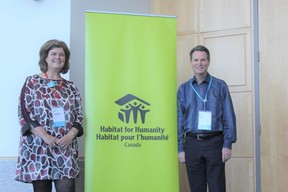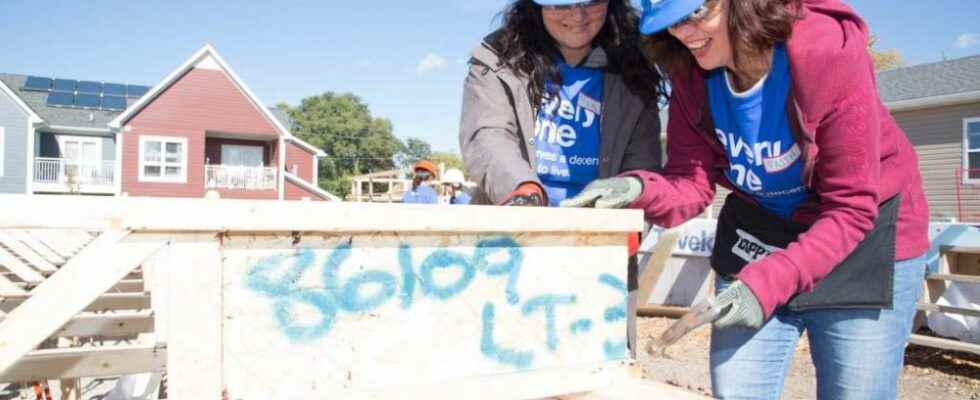A veteran non-profit housing agency is building more — and differently — to meet “mind-boggling” needs as the housing crisis deepens.

A veteran non-profit housing agency is building more — and differently — to meet“mind boggling” needs as the housing crisis deepens.
Habitat for Humanity Heartland Ontario, the local branch that covers Middlesex, Elgin, Oxford, Perth, Norfolk and Brant counties, typically helps six to eight families get into their own home each year by offering geared-to-income mortgages.
The new goal? Serve at least four to five times as many, at least 30 families, every year by 2024.
Getting there means a shift away from low-density builds, like single-detached houses, to townhomes and other higher-density options.
“(We’re) going from single-family builds to multi-unit builds that can house so many more families, because the need for affordable housing is just mind boggling in our country. And we all know it now,” Julia Deans, Habitat’s chief executive said in London on Thursday, May 12.
London was host for the national conference for local Habitat chapters from across the country at RBC Place, an event originally planned for 2020 before the pandemic hit.

Deans said the Heartland Ontario chapter is “constantly upping their game” to get more families into homes.
Two looming projects, a 56-unit development in Brantford and 20 two-bedroom condos planned for northeast London, on Highbury Avenue south of Fanshawe Park Road, highlight the organization’s move toward a new kind of housing.
Even its newest development, 12 single-family homes on the site of the former Lorne Avenue elementary school, will include secondary units — sometimes called granny suites — for owners to generate rental income or house additional family members. That project is in the planning and design phase, meaning it’s years away.
Higher-density projects mean a bigger outlay of cash to fund multimillion-dollar builds, plus using volunteers, a key pillar of Habitat’s work, differently.
“To build in speed and scale, the volunteer model changes,” board chair Alan MacKinnon said.
But the vision is still the same: opening up dreams of home ownership for many who thought it was out of reach.
“It’s exciting and it’s very gratifying to know we are really making a difference in the affordable housing crisis. We can use our history and institutional knowledge,” said George De Vlugt, construction manager at Habitat Heartland.
“So many are saying ‘Can I ever buy a home?’ We are a solution to that. While there’s a heavier workload, there’s a greater satisfaction.”
Building up, and partnering with developers, governments and other organizations, is the kind of “new thinking” that’s needed, Deans said.
In London, a red-hot housing market and rising rents are pricing out many residents and putting strain on an already overburdened public and affordable housing network. More than 6,000 households are on the waiting list for social housing, with a wait of a decade unless there are urgent health concerns.
The City of London’s vision to embrace density to curb costly urban sprawl and make better use of city resources, lights the way for other Habitat chapters looking to have the biggest impact, Deans said. A city council that shares the vision of higher-density living is important to making it happen.
“We’re in a place that represents so many of the opportunities and challenges every community in Canada has, but with a local Habitat that’s really pushing the envelope. That’s been super inspiring,” she said.
Local support, from donations to corporate partnerships to volunteer power, is strong in London, Habitat officials say. It’s part of keeping the focus on humanity, said Sharon Brennan, Habitat Heartland’s manager of community partnerships.
“We’re an organization, but we’re a movement.”
